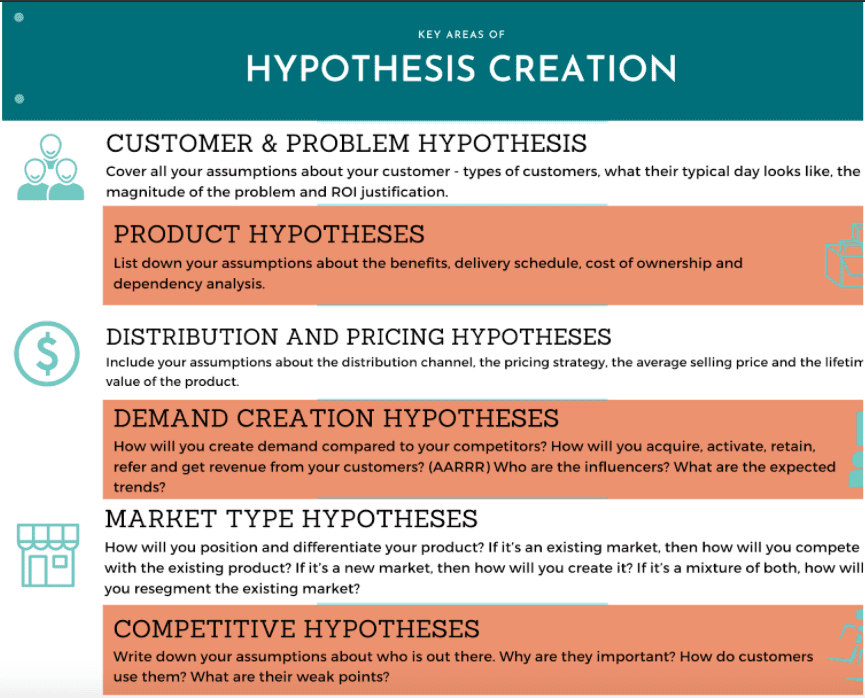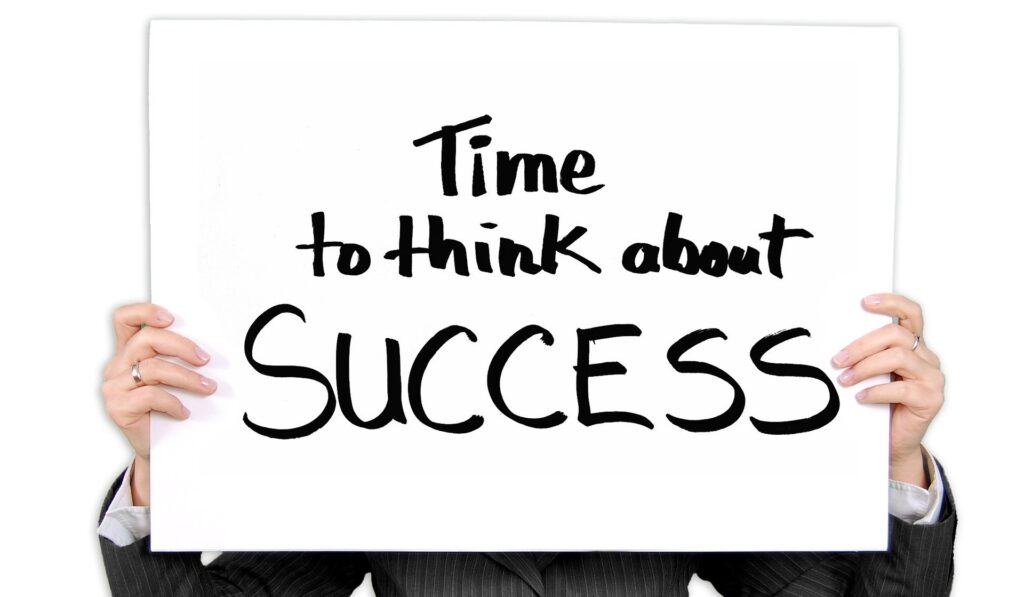Most of us have experienced the ‘Eureka’ moment more than once in our lives.
Although we haven’t rushed into the streets naked, we have launched our startup idea, achieved unprecedented success and become wealthy and famous -all in our head, of course.
One of the reasons why us practical people never invest in our startup idea is because we are so practical.
We know the stats on startup failures on our fingertips.
We know the odds are stacked against us.
The chances that we can make more money from a startup compared to our job are slim, to say the least.
Here’s a fresh reminder to console us cynics – A 100 million startups are launched in America each year. Out of these, 44% fail before their fifth year.
And the primary reason for failure? No market need.
See, we know that our idea seems great to us- because WE were the ones who came up with it. But this doesn’t mean that people want it. As wonderful as a Eureka moment is, it is best enjoyed in a flight of fantasy and not to be invested in.
It does make you wonder about the 56% of businesses that fail -are their ideas no good?
Surprisingly, no. Most of these startup ideas are excellent – geniuses come up with them and launch them. But these smart people want to tackle interesting problems, rather than problems that solve a market need.
You believe that a particular problem exists and you come up with an innovative way to solve it.
That’s what you’re supposed to do right? Isn’t that what everyone tells you?
Solve problems, create value, and success will follow?
Not quite.
What if the problem that you see, isn’t a big deal for other people?
What if the source of the problem is something else?
Or worse, what if it seems like a problem for you but is a solution for other groups in the market?
For example, suppose you come up with a miracle drug to end sickness. And then you realize you can’t sell it because the healthcare and pharma industries don’t want to go out of business.
Something that we often do, with our flawed human brains, is assuming we know more than we do.
We assume we know the problem, we believe we know the solution and we assume the little details that we forget to research.
These assumptions or beliefs in our mind are unfounded and based on our own perceptions.
This is known as ‘introspective illusion.’ In his book, ‘The Art of Thinking Clearly,’ (which you should read if you’re in the entrepreneurship game), Rolf Dobelli talks about how humans are more convicted of their own internal observations, than that of others.
Although introspective illusion has to do with internal reflection, it holds in the case of startup ideas, because more often than not, they ARE born of inner beliefs.
But how clear and honest is internal reflection?
In his book, Dobelli talks about an experiment conducted by Swedish psychologist Petter Johnson. He allowed test subjects a glimpse of two portraits of random people and asked them to pick the one they found attractive. He then showed them the photo they didn’t select up close, asking them to explain what they found attractive about the face. Most participants failed to notice it had been swapped and justified in detail why they favored the image.
Because they believed that they had selected the portrait, they began contriving why they preferred it—introspective Illusion.
In conclusion: Nothing is more convincing than your own beliefs.
Hypothesis Testing
When planning on launching a startup (or any business venture), you can reduce that 56% chance of failure by testing the assumptions on which your ideas are based.
This is known as Hypothesis Testing.
Hypothesis testing is the first step of the Customer Development Model developed by Steve Blank, ex-Silicon
valley entrepreneur and lecturer at Stanford University.
He talks about it in great detail, in his 2005 bestseller that launched 10,000 startups and has been hailed as the startup handbook.
The goal behind Hypothesis testing is to analyze the blind assumptions that underpin your initial ideas regarding your product and your market.
In understandable language -you jot down your oh-so-dear beliefs about your fantastic product/service idea: how it will help people, how you will provide your service/deliver your product, how you will generate revenue, who your competitors are, etc.
Then you go out there and try to prove each of them false. You criticize your idea as though it were someone else’s business and you were an investor. This works because
- We’re good at criticizing and
- We’re even better at criticizing when we have to spend money on someone else
- most of our underlying assumptions have been made sitting at a desk, not while watching our customers.
So once you’ve disproved most of your theories, you realize how faulty your business idea was in the first place and
you thank me for having told you to do this step. Then you take the money you didn’t waste and go on vacation instead.
I’m joking. Although, that wouldn’t be an entirely terrible idea.
If you have the persistence, you can use your findings to devise a better model and test your hypotheses once again. Thus you go back and forth, creating a feedback loop. Creating a loop enables you to
- Get a better understanding of who your customers are
- Reduce the risk of failure borne of market need
- Adapt to changes in the market while your product/service is being developed
- Create an agile team
This way, when you go out in the market in a couple of month’s time, you won’t be in for any nasty surprises.
You’re probably thinking: “Alright, I’ve got the importance of hypothesis testing sufficiently hammered down, teach me how to do it already!”
Don’t worry. We’re getting there.
The first step, of course, is identifying the hypotheses.
If you have a startup idea, go along with that. If you don’t have one -think of anything crazy -a device to record scents, a transparent hole punch or a color-detecting pen for example.
Just so you know, you can identify your hypotheses lying down, or whatever you’re doing right now. Just grab a pen, or as Roald Dahl would- a bit of crayon or lipstick and continue.
The format of a general hypothesis is
- Person
- Problem
- limit/task
You can phrase this like;
“I believe [type of person] experiences [type of problem] because of [limit or constraint]”
“I believe people who use hole punches often punch in the wrong places because traditional hole punchers are opaque.”
“I believe people who buy perfume can’t explain which scent they want to buy because they have no way of recording something they smelt.”
“I believe professional and hobbyist artists have trouble finding the color they want to use because they have no way of detecting color from the real world.”
This is the statement upon which your business lies. If this is not true, your business will fail.
This step is the fun part. After your idea is in place, you create your business model, which is the tricky part.
Then you have some more fun identifying hypotheses regarding your business model.
When identifying your core hypotheses, it’s best to
- Do it as a team. When everyone’s beliefs come onto the table, it’s more accurate.
- Do it quickly
- Make sure they are testable.
Here are a bunch of questions to get you started on the fundamentals of hypotheses testing. Write down your assumptions and beliefs in the following categories.

Customer & Problem Hypothesis
Cover all your assumptions about your customer – types of customers, what their typical day looks like, the magnitude of the problem and ROI justification.
Sample Hypotheses:
This is the problem faced by our customers___
The magnitude of the problem they face is ___
These are our types of customers___
A typical day in our customer’s life looks like___
Our customer’s comfort level with technology is ___
Our customer’s comfort level with change is___
Our customer has ___ job title
Our customer’s social identity is ___
Our customer is willing to spend ___ to solve their problem.
Product Hypotheses
List down your assumptions about the benefits, delivery schedule, cost of ownership and dependency analysis.
Sample Hypotheses:
This product will be useful to our customers because___
Once customers are using this product, they will gain___
Our customers will repurchase our product because___
This product/service will work for them by___
Distribution and Pricing Hypotheses
Include your assumptions about the distribution channel, the pricing strategy, the average selling price and the lifetime value of the product.
Sample Hypotheses:
Resources required in building/distributing this product are ___
Partners required in building/distributing this product are ___
Demand Creation Hypotheses
How will you create demand compared to your competitors? How will you acquire, activate, retain, refer and get
revenue from your customers? (AARRR) Who are the influencers? What are the expected trends?
Sample Hypotheses:
Stakeholders involved in using/buying this product are___
Customer’s purchasing decisions are influenced by ___
Market Type Hypotheses
How will you position and differentiate your product? If it’s an existing market, then how will you compete with the existing product? If it’s a new market, then how will you create it? If it’s a mixture of both, how will you re-segment the existing market?
Sample Hypotheses:
If customers did not buy/use our product, they would buy/use___
Competitive Hypotheses
Who is out there? Why are they important? How do customers use them? What are their weak points?
Sample Hypotheses:
Customers are already using ___
What Next?
Once you have identified your core hypotheses, your job will be to go out and test them in the real world. This is where interviewing your customers comes in. Talking to your customers gives you a reality check. You will see whether your assumptions hold true in the real world or not.
Interviewing customers also requires a framework, which helps you get the most out of it. However, we will cover that in a new article.
Alright, I agree this was long read, and you probably stopped writing at Hypothesis 1.
Don’t worry, the whole point was to bore you so that you give up on your idea before you start and save yourself a lot of money.
I’m joking, although, for the dreamers out there, this must have given you an understanding of how difficult being an entrepreneur is. After all, hypothesis testing is only a minor step.
Take some time out with your team, or if you’re a solo worker, your imaginary friend and thoroughly flush out your business idea and model.
If you’ve had success with other idea testing methods, let us know below so fellow entrepreneurs can benefit from your knowledge.
Till then, have fun filling in the blanks!



